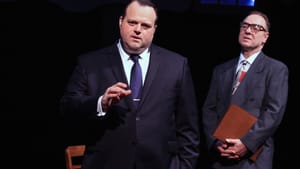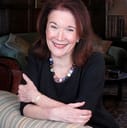Stay in the Loop
BSR publishes on a weekly schedule, with an email newsletter every Wednesday and Thursday morning. There’s no paywall, and subscribing is always free.
The real Frank Rizzo, as I knew him
Bruce Graham’s ‘Rizzo’ at Theatre Exile (third review)

Theatre Exile’s entertaining production of Bruce Graham’s commissioned play Rizzo opened to largely positive reviews that I found well deserved. (Full disclosure: My daughter-in-law, Deborah Block, is Exile’s producing artistic director.) Graham’s body of work, some 20 plays in all, comprise a love letter to Philadelphia as well as an insistence that we understand but never judge or degrade another human being.
But after the applause died down, I found myself strangely unsettled and even sad. Thanks to Graham’s determination to achieve fairness and balance, the good and the bad of Frank Rizzo the man are both there. But the terrifying ugly of the man and some members of his police force is barely hinted at.
Scott Greer, a gifted actor capable of transforming himself in each role he undertakes, conveys Rizzo’s girth, power, wit, determination, charm, and charisma. But there is a sweetness in Greer’s nature — and Rizzo, for all his conflicting characteristics, did not possess an iota of sweetness.
I have read that Graham tells his Drexel film and theater students to write what they know, and with this guidance in mind, I feel compelled to do the same.
Relaxing with Blaze Starr
I encountered Frank Rizzo for the first time in 1961 during my junior year at Goucher College in Baltimore. During this period, that city’s nightlife was defined by an area referred to as “The Block”: the 400 block of East Baltimore Street, known for its strip clubs, sex shops, and burlesque houses. The most successful of these was the Two O’Clock Club, where the city’s most famous stripper, the voluptuous redhead Blaze Starr, commanded the stage.
My political science professor, Dr. Robert Loevy, determined to make keen observers of his students, assigned me to interview Blaze Starr about life on the Block. When I arrived at the club on the appointed afternoon, my interviewee, Blaze, was sitting quietly in a corner having a drink with “a regular visitor” — Philadelphia police inspector Frank Rizzo, in full dress regalia. His gun was clearly visible, as was his nightstick. The bartender explained that the couple had just enjoyed a “relaxing morning together.” They had become friends, the bartender added, after Rizzo had arrested her in Philadelphia for “lewdness.”
“Miss Sherman,” Blaze Starr said to me, “meet Captain Rizzo” (apparently recalling his title when he’d arrested her in 1954). The inspector stood. He was tall. He was broad. He was charming. He was foreboding. He was not one bit sweet, and I felt myself shiver. I wondered why it was necessary for a police officer to wear a gun and carry a nightstick while not on duty.
Terror of black kids
Fast-forward to the late ’60s, by which time Rizzo was police commissioner and images of youths being beaten by police clubs had hit the national press. Arlen Specter, then the district attorney, was seeking alternatives to punishment for some of Philadelphia’s most troubled youths, and I was one of the social workers who volunteered to provide therapy and other healing activities. These kids called themselves the Black Panthers, but they were not connected to the famously militant West Coast Panthers: They neither wrote nor distributed hate manifestoes; they just wanted to bond and help each other deal with their surroundings, stay safe, and stay in school. These kids regularly joined me to make breakfasts, which we then delivered to hungry neighbors. Sometimes they came to my home for lunch and fussed over my firstborn, Elisabeth, who rode in the car with us as we delivered the food.
Early one morning, as Elisabeth, four of the kids — all 11 years old — and I were in my car making our deliveries, I heard a police siren. “This cannot be for me,” I told myself: I was neither speeding nor had I gone through any red lights or stop signs. But soon the police car pulled me over. If I was frightened at that moment, the kids with me were terrified. The police officer opened the backseat of the car, pulled out my four helpers and threw them to the ground, treating them like sacks of potatoes. I tried to reason with the officer. “We are taking food to those who need it,” I said, and I pointed to a container of hard-boiled eggs. “Keep quiet,” he told me. “Just show me your license and registration.” Meanwhile, the kids were taken to the sidewalk and searched roughly for weapons. When none were found, the cop threw them back into my car.
“Officer,” I remonstrated, “my passengers are good kids in my care. We are working together. I am going to drop them off at school when we are finished delivering food.”
“Your husband should call and thank the Philly police,” he replied angrily before he departed. “We are protecting you from harm.” By now the boys in my backseat were crying. “Why are we hated?” one asked.
A wife’s resignation
Some thoughts about the portrayal of Rizzo’s wife, Carmella: The multi-talented Amanda Schoonover played all of Rizzo’s female characters, giving each of them — including Carmella — a feminine walk and mild derriere wiggle in her exits. This was surely not the public Carmella Rizzo, a painfully thin and seemingly repressed woman who rarely accompanied her husband in public. The one time I did see her, her husband greeted all who approached him with gusto, while Carmella remained quiet, by all appearances withdrawn, never smiling. Perhaps at home Carmella displayed the warmth, vitality, and closeness seen in the play scripted by Graham, but her public image was one of sad and lonely acceptance. This, of course, was perpetuated by her refusal to grant interviews, whatever the reasons, which the play touched upon. (On the other hand, Schoonover’s walk, including the slight wiggle, was an accurate reflection of the resolute liberal activist Shelly Yanoff, who came close to unseating Rizzo, as anyone who has seen Shelly on the dance floor can attest.)
By all means, see Bruce Graham’s sensitive and caring portrayal of Frank Rizzo. Use it as a focal point to discuss the man, his leadership, and his legacy. But please, as you do, remember what I saw firsthand — those crying children in my car. Remember the ugly.
To read Carol Rocamora’s review, click here. To read Dan Rottenberg's review, click here.
What, When, Where
Rizzo. By Bruce Graham, from the book by S.A. Paolantonio; Joe Canuso directed. Theatre Exile production through November 8, 2015 at Christ Church Neighborhood House, 20 N. American Street (between Second and Third), Philadelphia. 215-218-4022 or theatreexile.org.
Sign up for our newsletter
All of the week's new articles, all in one place. Sign up for the free weekly BSR newsletters, and don't miss a conversation.

 SaraKay Smullens
SaraKay Smullens